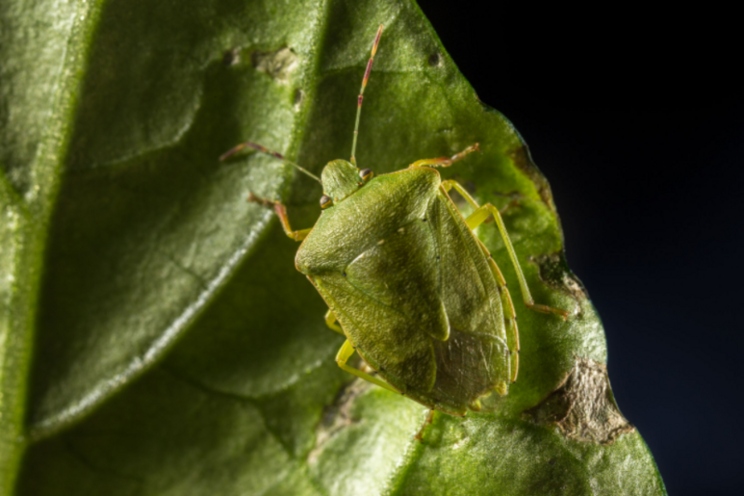Koppert developing biological solution against green shield bug
Added on 27 June 2021

Over the course of the previous decade, the southern green shield bug has ravaged unheated pepper, aubergine, and cucumber greenhouses in Southern Europe. This pest is also gaining ground in heated, high-tech greenhouses in north-western Europe and central Europe. The disappearance of chemical products in combination with climate change has resulted in an increase in the level of infestations in greenhouses. Combating the green shield bug is a significant challenge and until now is only possible with the use of chemical products. These chemical products disturb the populations of beneficials that combat pests such as thrips, spider mites, aphids, and whiteflies. It is possible to manually remove green shield bugs from crops, but this is only an option at low levels of infestation in the crop. That is why this technique has so far yielded modest results.

Koppert identified the problem of southern green shield bugs at an early stage. For this reason, Koppert's research in 2018 to find the most effective natural enemy of this pest identified a European parasitic wasp that parasitizes the eggs of green shield bugs. The first field tests have shown very promising results and demonstrated that southern green shield bugs can be combated effectively in practice. Large-scale field tests in a number of countries are expected to confirm these results this year.
'The damage that southern green shield bugs cause is enormous and regularly results in crops needing to be cleared away earlier than planned. Combating this pest is challenging and chemical products are often used for this purpose out of necessity. We are therefore thrilled that we have a biological solution for our customers in our sights. Our international team is putting all its efforts in ensuring that growers can be offered a suitable solution to combat the southern green shield bug,' says Bart Sels who is responsible for supervising Koppert Belgium.
Source and Photo Courtesy of AgNews
Source: AgNews
More news















